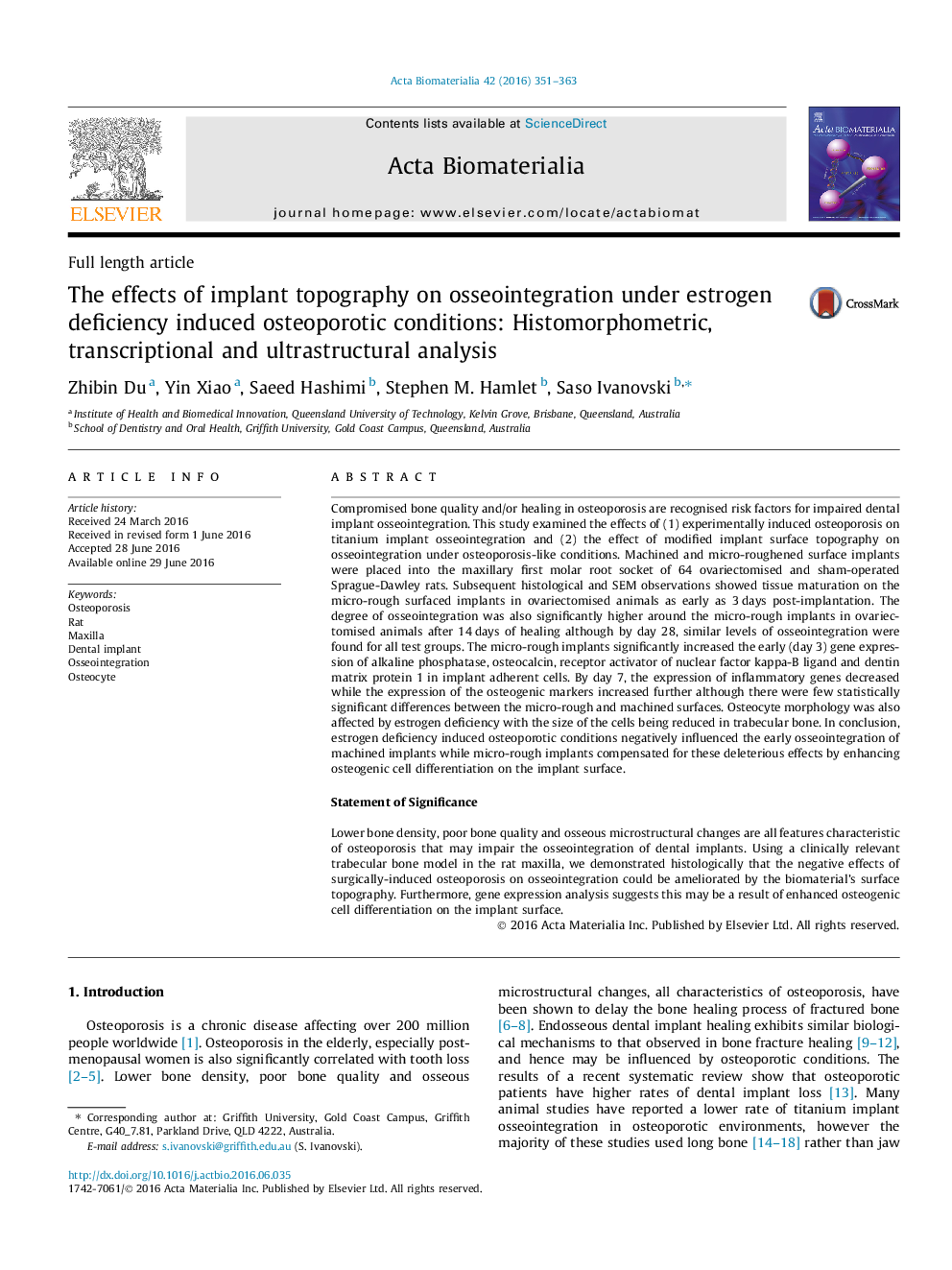| کد مقاله | کد نشریه | سال انتشار | مقاله انگلیسی | نسخه تمام متن |
|---|---|---|---|---|
| 6450254 | 1415944 | 2016 | 13 صفحه PDF | دانلود رایگان |
Compromised bone quality and/or healing in osteoporosis are recognised risk factors for impaired dental implant osseointegration. This study examined the effects of (1) experimentally induced osteoporosis on titanium implant osseointegration and (2) the effect of modified implant surface topography on osseointegration under osteoporosis-like conditions. Machined and micro-roughened surface implants were placed into the maxillary first molar root socket of 64 ovariectomised and sham-operated Sprague-Dawley rats. Subsequent histological and SEM observations showed tissue maturation on the micro-rough surfaced implants in ovariectomised animals as early as 3Â days post-implantation. The degree of osseointegration was also significantly higher around the micro-rough implants in ovariectomised animals after 14Â days of healing although by day 28, similar levels of osseointegration were found for all test groups. The micro-rough implants significantly increased the early (day 3) gene expression of alkaline phosphatase, osteocalcin, receptor activator of nuclear factor kappa-B ligand and dentin matrix protein 1 in implant adherent cells. By day 7, the expression of inflammatory genes decreased while the expression of the osteogenic markers increased further although there were few statistically significant differences between the micro-rough and machined surfaces. Osteocyte morphology was also affected by estrogen deficiency with the size of the cells being reduced in trabecular bone. In conclusion, estrogen deficiency induced osteoporotic conditions negatively influenced the early osseointegration of machined implants while micro-rough implants compensated for these deleterious effects by enhancing osteogenic cell differentiation on the implant surface.Statement of SignificanceLower bone density, poor bone quality and osseous microstructural changes are all features characteristic of osteoporosis that may impair the osseointegration of dental implants. Using a clinically relevant trabecular bone model in the rat maxilla, we demonstrated histologically that the negative effects of surgically-induced osteoporosis on osseointegration could be ameliorated by the biomaterial's surface topography. Furthermore, gene expression analysis suggests this may be a result of enhanced osteogenic cell differentiation on the implant surface.
128
Journal: Acta Biomaterialia - Volume 42, 15 September 2016, Pages 351-363
